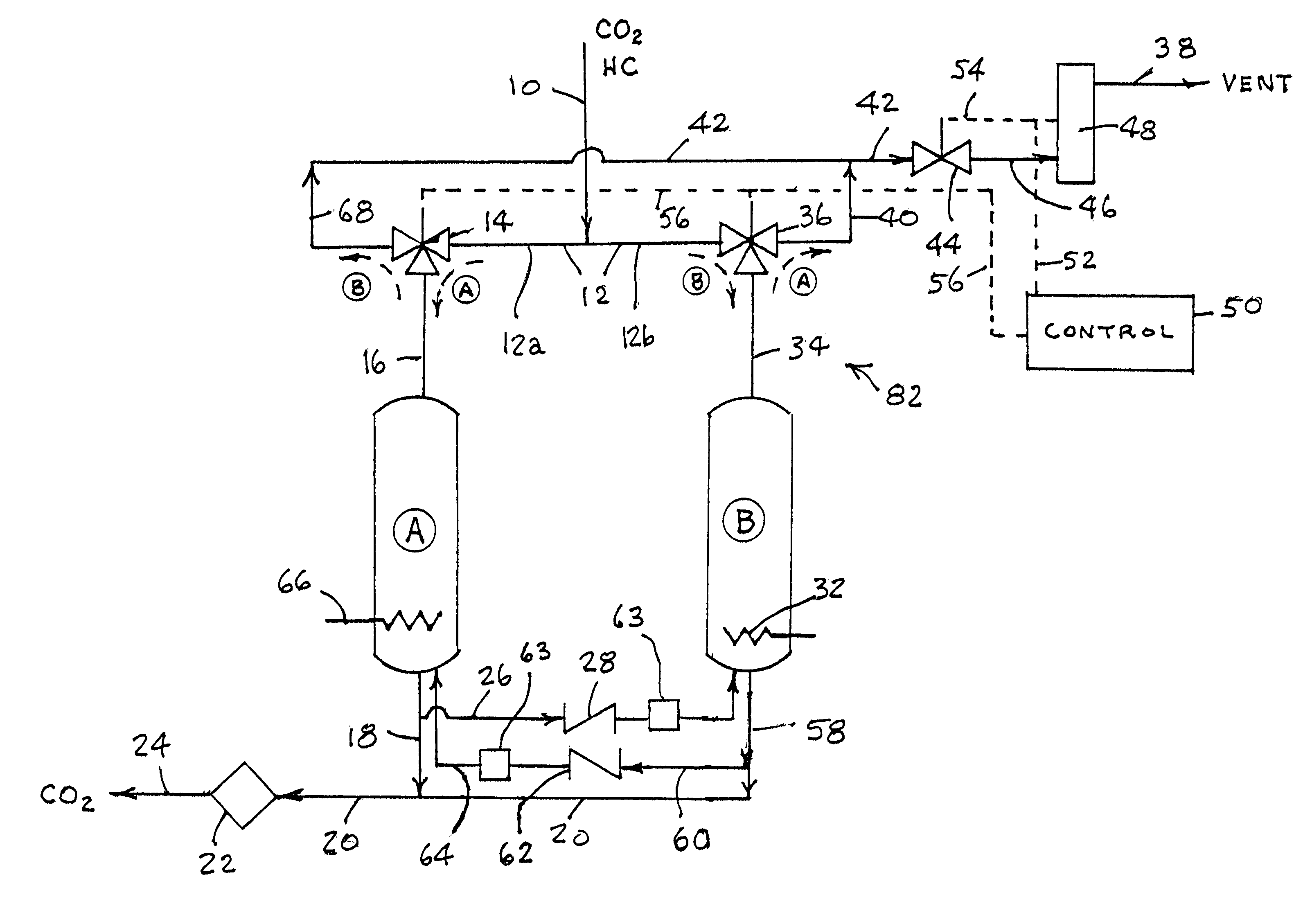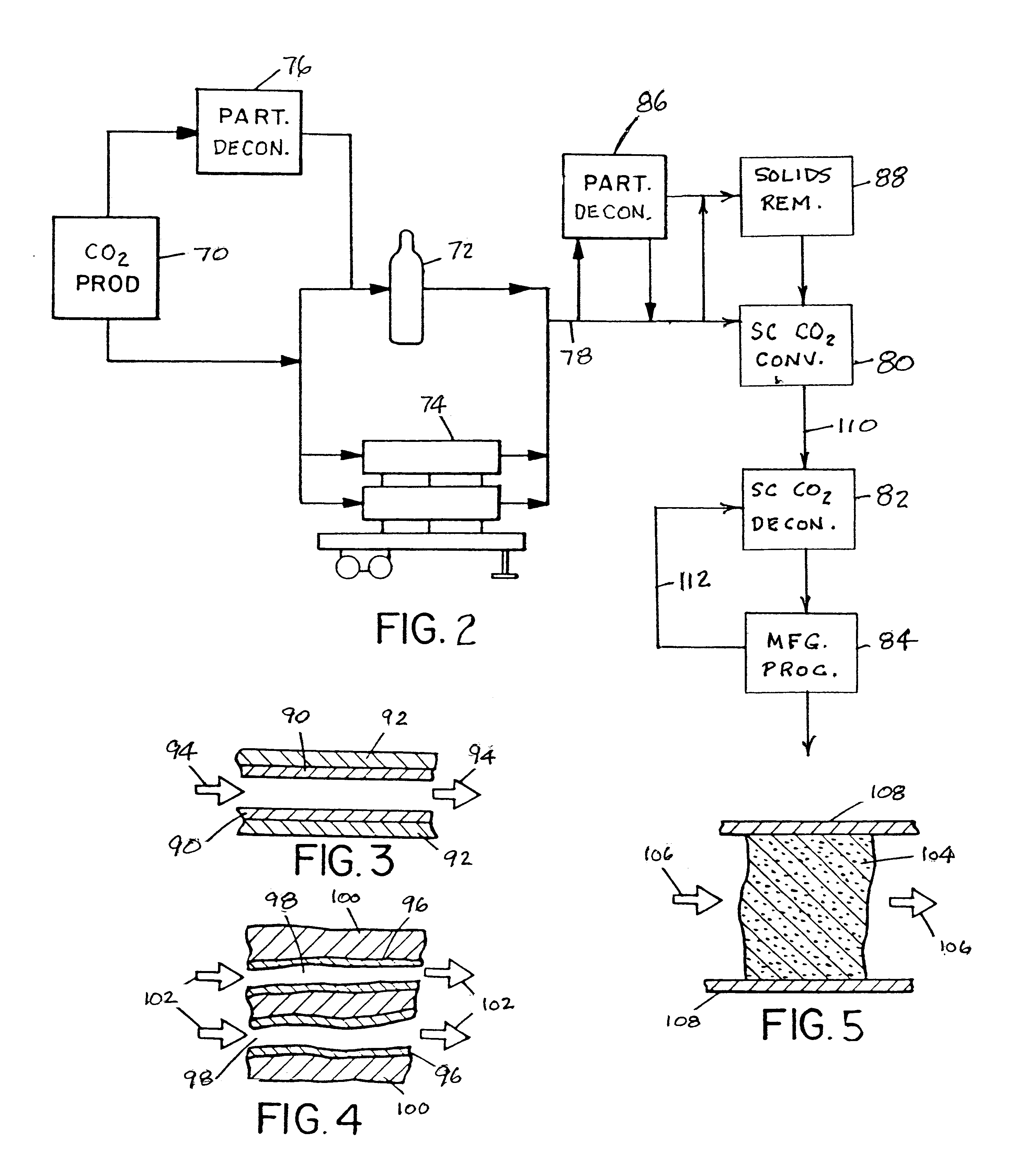Self-regenerative process for contaminant removal from liquid and supercritical CO2 fluid streams
a technology of fluid stream and contaminant removal, which is applied in the direction of other chemical processes, separation processes, silicon compounds, etc., can solve the problems of potential recontamination, time-consuming and limited effectiveness, and inability to use the final product,
- Summary
- Abstract
- Description
- Claims
- Application Information
AI Technical Summary
Problems solved by technology
Method used
Image
Examples
Embodiment Construction
A critical aspect of the present invention is the use of a high silica zeolite as the decontaminating agent for removal of contaminants, especially hydrocarbons, from fluid carbon dioxide, down to the 100 ppb concentration level or lower for extended periods of time without itself being degraded by the elevated temperature and pressure environment necessary to maintain the carbon dioxide in its fluid state.
It will be recognized in considering this invention that "effectiveness" for the purpose of the invention means the ability to remove sufficient contaminants from the fluid carbon dioxide stream that the residual contaminant content of the treated fluid after contact with the high silica zeolite in the decontaminating device is no more than 100 ppb, preferably no more than 50 or 10 ppb, and most preferred, no more than about 1 ppb. While prior art has taught the use of oxides or metals for various "purification" or "decontamination" processes, those systems were not operated under...
PUM
| Property | Measurement | Unit |
|---|---|---|
| temperature | aaaaa | aaaaa |
| critical point | aaaaa | aaaaa |
| pressures | aaaaa | aaaaa |
Abstract
Description
Claims
Application Information
 Login to View More
Login to View More - R&D
- Intellectual Property
- Life Sciences
- Materials
- Tech Scout
- Unparalleled Data Quality
- Higher Quality Content
- 60% Fewer Hallucinations
Browse by: Latest US Patents, China's latest patents, Technical Efficacy Thesaurus, Application Domain, Technology Topic, Popular Technical Reports.
© 2025 PatSnap. All rights reserved.Legal|Privacy policy|Modern Slavery Act Transparency Statement|Sitemap|About US| Contact US: help@patsnap.com



